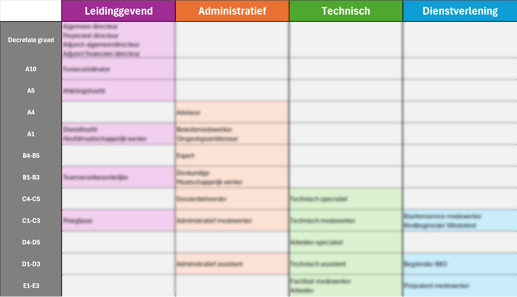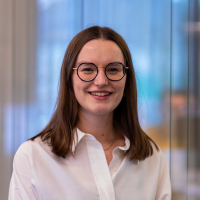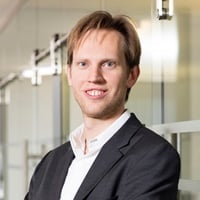The municipalities of Beveren, Kruibeke, and Zwijndrecht faced a unique challenge during the establishment of the merged municipality. A clear, future-oriented organisational structure was essential to ensure agility and effective functioning within a changing administrative context. The pre-merger administrations developed a provisional transitional organisational model, but Möbius was engaged to support them in designing the final organisational model.
The aim was an efficient, agile structure that would not only be future-proof but also widely supported by both management and the council. The new organisational model needed to enhance the organisational effectiveness of the merged municipality while allowing sufficient room for future growth.
Step-by-Step Guidance Toward a Future-Proof Organisational Structure
Möbius guided the merged municipality of Beveren-Kruibeke-Zwijndrecht through the process with a step-by-step approach, combining technical expertise with knowledge of the local context. The three phases below formed the foundation for a sustainable and strategic organisational structure.
Phase 1: Design of the new organisational model
The first phase laid the groundwork for the future organisational structure. Together with the project group, four guiding principles were established for the new structure, aligned with the ambitions and needs of the new municipality. These principles provided a framework for designing a high-level model, which then directed the detailed organisation of departments and teams.
Within this structure, departments and teams were clearly defined to ensure efficient and coherent operations. This was achieved through close consultation with management and the council to map out specific job titles and associated capacities.

Phase 2: Unified Job Structure and Integrated Personnel Plan
Following the organisational model, Möbius focused on integrating personnel within the new structure. The existing workforce of the three municipalities was carefully mapped and aligned with the new model. At the same time, a standardised job framework was developed, harmonising the roles across the three administrations into a single, consistent system.
Different pay scales were also analysed and consolidated into an integrated salary structure, fully aligned with the new job framework. For managerial roles, this was achieved through a job evaluation exercise, assigning appropriate pay scales using objective parameters. This enabled the council to make well-informed decisions regarding the financial implications of the new organisational structure.

Phase 3: Populating the New Organisational Model and Implementation
In the final phase, the new organisational model was concretely populated. Möbius assisted the merged municipality in developing an implementation plan for filling managerial positions. The specific context of the merged municipality was considered to ensure a smooth and supported transition to the new structure.
Result: A Future-Oriented, Strategic Organizational Structure
Thanks to the structured approach, close collaboration with the council, and active involvement of managers, the merged municipality of Beveren-Kruibeke-Zwijndrecht now has a clear and future-focused organisational structure. The new organisational model offers:
- Shared Vision and Supported Principles: The guiding principles established with the project group provide direction and stability, serving as a compass for the organisational structure.
- Clarity and Participation: The new model clarifies departments, teams, and roles, aligning operational realities with policy objectives.
- Strategic Placement of Key Roles: The right talent is optimally allocated to strategic positions, contributing to an agile and effective organisation.
- Ready for the Future: The merged municipality is well-prepared for future growth and can respond quickly to changing circumstances.
The structure reflects the ambitions of the merged municipality to operate efficiently and deliver services effectively, with room for future development and growth.



.jpg?width=410&height=220&name=iStock-1407807197%20(1).jpg)







